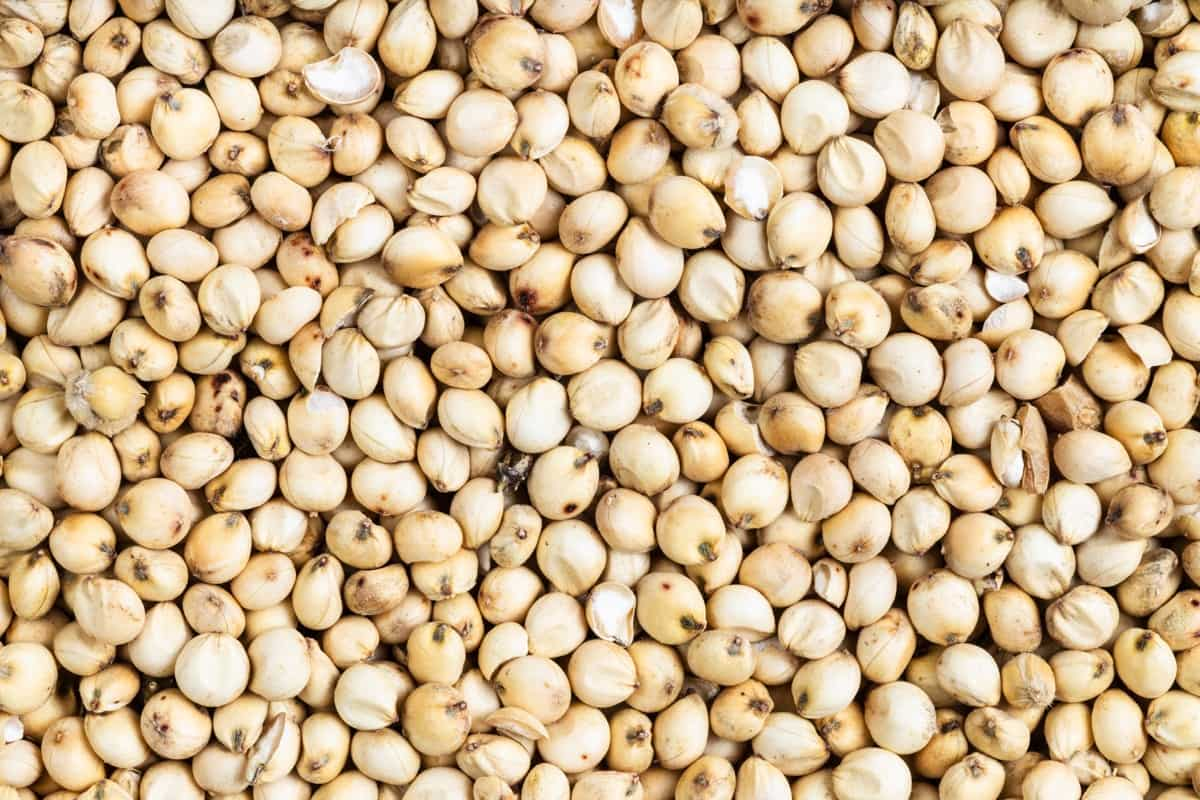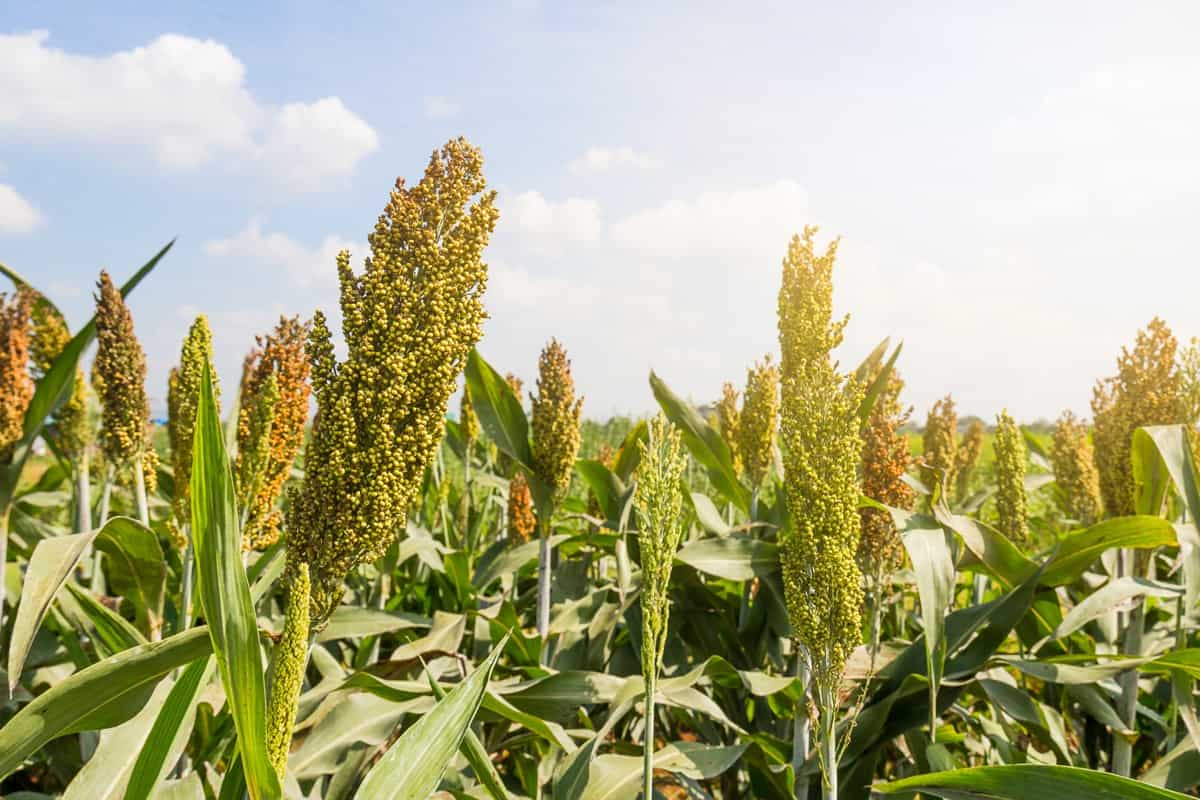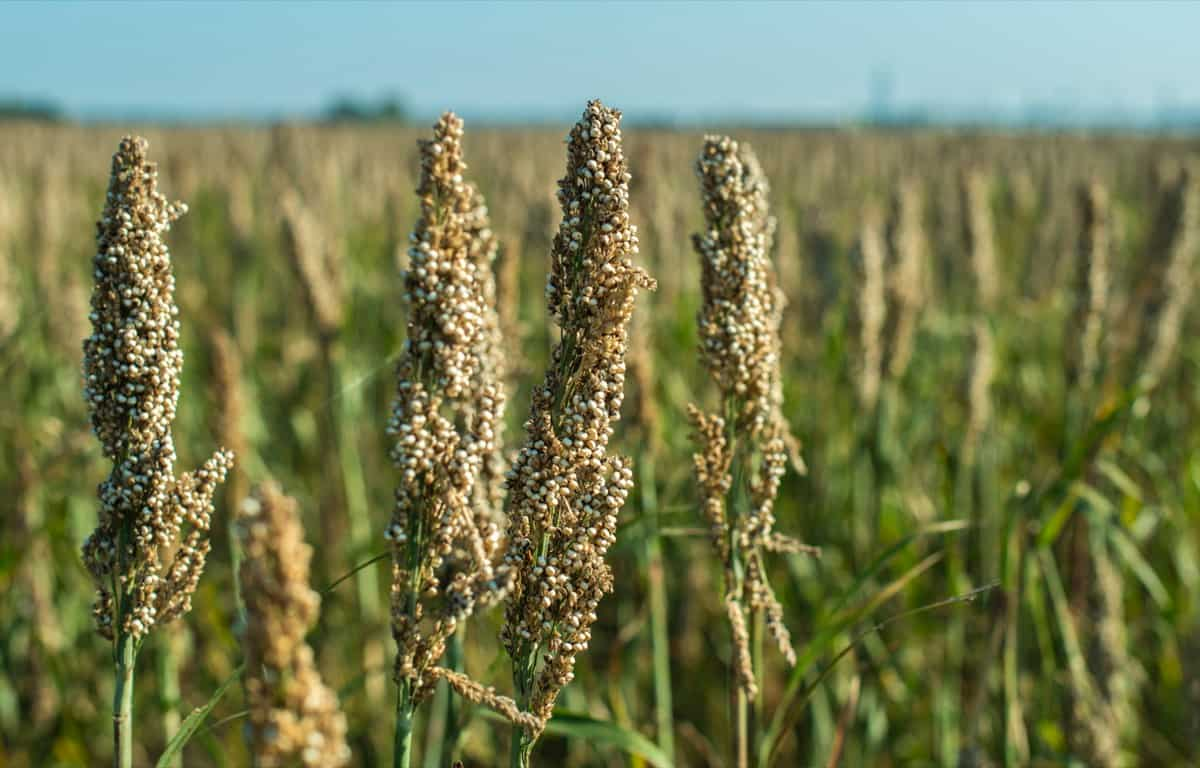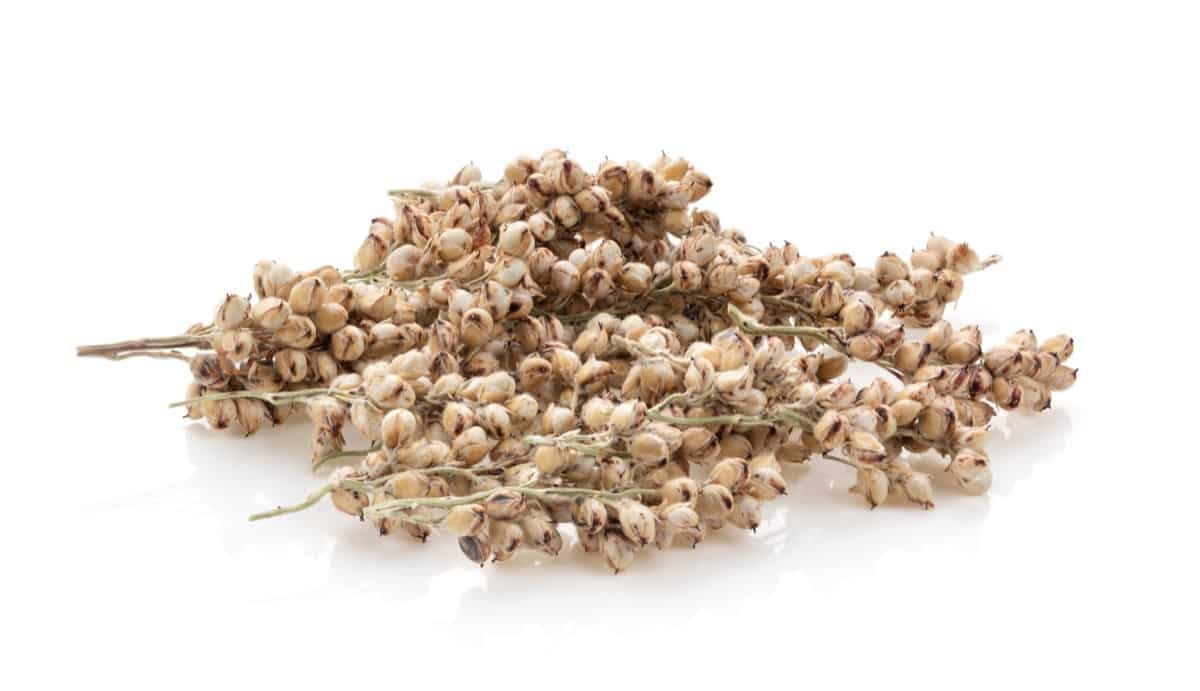This versatile grain has been gaining popularity among farmers due to its easy cultivation, low maintenance requirements, and good yields. Sorghum farming is an essential agricultural activity in the Philippines. The crop is mainly grown in the dry regions of the country, where it is an important food source and income for farmers.

Sorghum Farming in the Philippines
What Soil is Best for Sorghum Farming in the Philippines?
Many soil types in the Philippines are suited for different crops. For Sorghum farming, it is best to plant in sandy loam soil with a pH of 6.5 to 7.5. This type of soil is well-drained and has good aeration, which is necessary for the growth of Sorghum plants. Sandy loam soil is also relatively easy to work with and less susceptible to compaction than other soil types.
Sorghum Production in the Philippines
Sorghum is a hardy crop that can tolerate drought and poor soils, making it well-suited to the conditions found in many parts of the Philippines. To maximize profits, farmers must produce high-quality Sorghum. To do this, they must carefully select the right variety of Sorghum for their farm and growing conditions.
They must also use the proper production practices, such as planting at the right time, applying the right amount of fertilizer, and controlling pests and diseases. Sorghum farming in the Philippines has been gaining popularity in recent years. It is typically done on small-scale farms using traditional methods.
Benefits of Sorghum Farming
- Sorghum farming provides many benefits to farmers and the local community. It is also a good income source for farmers as it is in high demand by the food and beverage industry.
- Sorghum farming also helps to improve soil fertility and provides employment opportunities for the local community.
- Sorghum can grow in harsh conditions, making it an ideal crop for farmers in the Philippines. Sorghum has a high yield potential and is resistant to pests and diseases. Sorghum grain can be used for human consumption or livestock feed.
- Sorghum farming quickly became popular in the Philippines due to its high yield potential and ability to grow in marginal soils.
- Sorghum is highly drought resistant, making it an ideal crop for areas with limited water resources.
- Sorghum can be grown in various climates and soil types, making it a versatile crop that can be adapted to different conditions.
- Sorghum is an excellent food and feed source for humans and animals.
In case you missed it: How to Start Organic Farming in the Philippines: Schemes, Certification, Profits, Cost, and Challenges

Field Preparation for Sorghum Farming in the Philippines
Sorghum farming in the Philippines is a labor-intensive process that begins with preparing the field for cultivation. The main step is to clear the land of any trees, shrubs, or other vegetation. This field preparation can be done with the help of machinery or by hand. Once the land is cleared, it must be plowed and harrowed to loosen the soil and prepare it for planting. Sorghum seeds are then sown by hand or with a seed drill. After planting, the field must be weed-free to ensure the Sorghum plants have enough room to grow.
Different Varieties of Sorghum in the Philippines
Sorghum is a genus of several plants in the grass family. The different types of Sorghum are used for different purposes. For example, some Sorghum varieties are used for fodder, while others are used to make syrup or alcohol. Other Sorghum varieties are grown as grain crops. The most common types of Sorghum in the Philippines are NTJ 02, SPV 422, ICSV 93046, CSR 93034, and ICSV 700.
What Climate is Best for Sorghum Farming in the Philippines?
Sorghum thrives in tropical and subtropical climates with long, hot summers and sunshine. The ideal climate for Sorghum farming is one with temperatures that remain consistently warm throughout the growing season. Daytime temperatures that are too hot can inhibit grain production, while cooler nighttime temperatures can cause the plants to be dormant. Sorghum also requires a minimum of four months without frost to produce a good crop.
In case you missed it: How to Start a Crab Farming in the Philippines: Business Plan, Types of Crabs, Indoor and Cage Culture

The Philippines is an ideal country for growing Sorghum due to its climate and soil conditions. Sorghum can be grown throughout the year in the Philippines, with peak production occurring during the dry season (December to May). To produce high yields, following proper agronomic practices when growing Sorghum is important. This includes selecting the right variety, preparing the land, planting at the right time, applying fertilizers correctly, and controlling pests and diseases.
Fertilizer Management for Sorghum Farming in the Philippines
Farmers typically apply nitrogenous fertilizers to Sorghum fields during the early stages of growth. Depending on the soil test results, phosphorus and potassium fertilizers may also be applied. To ensure a good yield, Sorghum must be properly fertilized. The recommended fertilizer application for Sorghum is 80-30-30. After the Sorghum seeds are planted, they need to be fertilized. This process can be done using a variety of fertilizers, including manure, compost, and urea. The recommended procedure for applying fertilizer to Sorghum is as follows:
- Broadcast the fertilizer evenly over the field before planting.
- Incorporate the fertilizer into the top 15cm of soil using a disc harrow or other suitable implements.
- Plant the Sorghum seeds at the recommended depth and spacing.
Farm Management Tips to Maximize Sorghum Production
To maximize Sorghum production, farmers need to have a good understanding of farm management principles and techniques. This includes identifying and selecting the best sites for cultivation, preparing the land, and using the most efficient irrigation and planting methods.
In case you missed it: How to Start Banana Farming in the Philippines: Business Plan, Varieties, Requirements, and Profit

Farmers should also be aware of the different types of Sorghum available and each variety’s yield potential to minimize costs. They should also know when to plant Sorghum so that it matures during high market demand. Furthermore, effective pest and weed management practices can help reduce production costs.
Sorghum Planting Process in the Philippines
Assuming you have already procured your seeds, the first step is to prepare the land. For Sorghum, well-drained and loamy soil is ideal. The land should be plowed and harrowed to create a fine seedbed. Be sure to remove any large stones or debris that could impede growth. Once the land is prepared, you can plant your Sorghum seeds. Sorghum planting can be done by hand or with a mechanical seeder. If planting by hand, sow the seeds about 3 cm deep and 30 cm apart in rows at least 1 meter apart.
If using a seeder, follow the manufacturer’s directions. After planting, cover the seedbed with a thin layer of straw or hay to protect the seeds from birds and animals. Once the plants have sprouted and are about 15 cm tall, they can be thinned to approximately 1 plant per hill (a hill is an area measuring about 30 cm in diameter). Sorghum does not require much fertilizer, but if you use some, apply it when the plants are about 20 cm tall.
Water regularly during dry periods, especially when the plants are young and during flowering and grain formation. Sorghum requires much water, so farmers rely on rainfall to provide the moisture needed during the growing season. If there is insufficient rainfall, farmers may need to irrigate their fields.
Once the Sorghum plants have matured, farmers harvest the grain using either manual or mechanical methods. After harvest, Sorghum grains are threshed to remove them from the stalks. The grains are then winnowed to remove any foreign matter or debris. Finally, the Sorghum grains are cleaned and sorted before storing or selling.
Care for Sorghum Plants in the Philippines
- Sorghum plants are one of the most popular crops grown in the Philippines. They are known for their sweet taste and nutritious value. Sorghum plants can be grown in various soil types and climates, but they must be well-watered and protected from harsh sunlight to thrive.
- When growing Sorghum plants, it is important to start with healthy seedlings. Nursery-grown seedlings are best, but you can also sow seeds directly in the field if you have a good germination rate.
- As the Sorghum plants grow, water them regularly and fertilize them with a balanced fertilizer. Provide some shading for the plants during the hottest hours to prevent leaf scorching.
Where Sorghum is Grown in the Philippines?
The province of Cotabato is located in the southern Philippines and is one of the country’s main producers of Sorghum. The climate in Cotabato is perfect for growing Sorghum, with warm temperatures and ample rainfall. Cotabato is home to many small-scale farmers who grow Sorghum on their farms. These farmers typically plant their crops in early March and harvest in late May or early June. Sorghum farming in Cotabato is mostly done by hand, with farmers using simple tools and equipment.
Tips for Getting Higher Sorghum Yields in the Philippines
- Planting the right Sorghum variety for your climate is critical for high yields.
- High phosphorus fertilizer encourages strong root growth and stalk development.
- Plant your Sorghum in well-drained soils to prevent root rot and maximize yield potential.
- Water your Sorghum regularly during the growing season to ensure optimal growth and grain development.
- Harvest your Sorghum when the grain is fully mature and dry for the best yields.
In case you missed it: Hydroponic Farming in the Philippines: How to Start, Cost, Profit, Crops, and Requirements

Pests and Disease Management for Sorghum Farming in the Philippines
Pests can damage Sorghum plants and reduce yields. Farmers use insecticides or mechanical methods such as crop rotation or planting trap crops to control pests. Pests and diseases are major constraints to Sorghum production in the Philippines. Sorghum is susceptible to several pests, including stem borers, leaf hoppers, aphids, whiteflies, and red spider mites. These can cause significant damage to the Sorghum crop if not controlled.
Diseases that affect Sorghum include downy mildew, root rot, and head smut. These diseases can also cause yield losses if not controlled. Combining chemical and cultural controls is the best way to control pests and diseases. Chemical controls include the use of insecticides, fungicides, and herbicides. Cultural controls include crop rotation, early planting, and resistant varieties.
Poor growing conditions can also lead to plant problems. Sorghum plants need full sun and well-drained soil to grow properly. If these conditions are not met, plants may be stunted or die. Poorly managed irrigation systems can also cause problems for Sorghum plants by providing too much or too little water.
Irrigation Management for Sorghum Farming in the Philippines
- There are several ways to water Sorghum; irrigation is one of the most efficient. When properly managed, it can help ensure that your plants have a consistent supply of water, which is essential for plant development.
- You’ll need to choose the right method for your specific needs. Next, you’ll need to develop a watering schedule that meets the needs of your plants. This will change depending on the variety of Sorghum you’re growing and your area’s climate conditions.
- Once you’ve developed a plan, it’s important to stick to it. Consistent watering is essential for healthy plant growth. Monitor your system regularly to ensure its functioning properly and deliver water to your Sorghum plants.
Challenges in Sorghum Farming in the Philippines
Poor soil fertility, pest and disease problems, and limited market access are some of the main constraints in the Sorghum crop. However, Sorghum farming offers many opportunities for small farmers to improve their livelihoods. Farmers can increase yields and incomes from Sorghum production with proper management and technical assistance.
How to Harvest Sorghum in the Philippines?
Harvesting of Sorghum typically occurs 100-120 days after planting, when the grains are mature and dry. Sorghum is a warm-season cereal grain that can be harvested for grain or forage. For grain, Sorghum is usually harvested with a combine harvester.
The combine harvester cuts the stalks and threshes the grain from the plant. The grain is then collected in a container on the combine harvester. Forage Sorghum can be harvested with a forage harvester or mower. The forage harvester cuts the stalks and chops them into small pieces before they are collected in a container on the machine.
In case you missed it: Greenhouse Farming in the Philippines: How to Start, Agriculture Crops, and Cost to Build

Conclusion
Sorghum farming in the Philippines is a new and exciting industry with great potential for profitability. The Philippine climate is well-suited for Sorghum production, and the country has many potential customers. Sorghum is a profitable crop to grow in the Philippines. With good production practices, Sorghum can yield high profits for farmers.
- Types of Pesticides Used in Agriculture: A Beginner’s Guide
- Economical Aquaculture: A Guide to Low-Budget Fish Farming
- 15 Common Planting Errors That Can Doom Your Fruit Trees
- How to Make Houseplants Bushy: Effective Tips and Ideas
- Innovative Strategies for Boosting Coconut Pollination and Yield
- Pollination Strategies for Maximum Pumpkin Yield
- The Complete Guide to Chicken Fattening: Strategies for Maximum Growth
- Natural Solutions for Tulip Problems: 100% Effective Remedies for Leaf and Bulb-Related Issues
- Revolutionizing Citrus Preservation: Towards a Healthier, Greener Future
- Natural Solutions for Peony Leaf and Flower Problems: 100% Effective Remedies
- Maximizing Profits with Avocado Contract Farming in India: A Comprehensive Guide
- Natural Solutions for Hydrangea Problems: 100% Effective Remedies for Leaf and Flowers
- The Ultimate Guide to Choosing the Perfect Foliage Friend: Bringing Life Indoors
- From Sunlight to Sustainability: 15 Ways to Use Solar Technology in Agriculture
- The Ultimate Guide to Dong Tao Chicken: Exploring from History to Raising
- The Eco-Friendly Makeover: How to Convert Your Unused Swimming Pool into a Fish Pond
- Mastering the Art of Delaware Chicken Farming: Essentials for Healthy Backyard Flocks
- 20 Best Homemade Fertilizers for Money Plant: DIY Recipes and Application Methods
- How to Craft a Comprehensive Free-Range Chicken Farming Business Plan
- Brighten Your Flock: Raising Easter Egger Chickens for Beauty and Bounty
- How to Optimize Your Poultry Egg Farm Business Plan with These Strategies
- Subsidy for Spirulina Cultivation: How Indian Government Schemes Encouraging Spirulina Farmers
- Ultimate Guide to Raising Dominique Chickens: Breeding, Feeding, Egg-Production, and Care
- Mastering the Art of Raising Jersey Giant Chickens: Care, Feeding, and More
- Ultimate Guide to Raising Legbar Chickens: Breeding, Farming Practices, Diet, Egg-Production
- How to Raise Welsummer Chickens: A Comprehensive Guide for Beginners
- How to Protect Indoor Plants in Winter: A Comprehensive Guide
- Ultimate Guide to Grow Bag Gardening: Tips, Tricks, and Planting Ideas for Urban Gardeners
- Guide to Lotus Cultivation: How to Propagate, Plant, Grow, Care, Cost, and Profit
- Agriculture Drone Subsidy Scheme: Government Kisan Subsidy, License, and How to Apply Online
- Ultimate Guide to Raising Araucana Chickens: Breed Profile, Farming Economics, Diet, and Care
- Bringing Hydroponics to Classroom: Importance, Benefits of Learning for School Students
- Ultimate Guide to Raising Polish Chickens: Breed Profile, Farming Economics, Diet, and Care
- Ultimate Guide to Raising Australorp Chickens: Profile, Farming Economics, Egg Production, Diet, and Care
- Silkie Chicken Farming: Raising Practices, Varieties, Egg Production, Diet, and Care
- Sussex Chicken Farming: Raising Practices, Varieties, Egg Production, Diet and Care